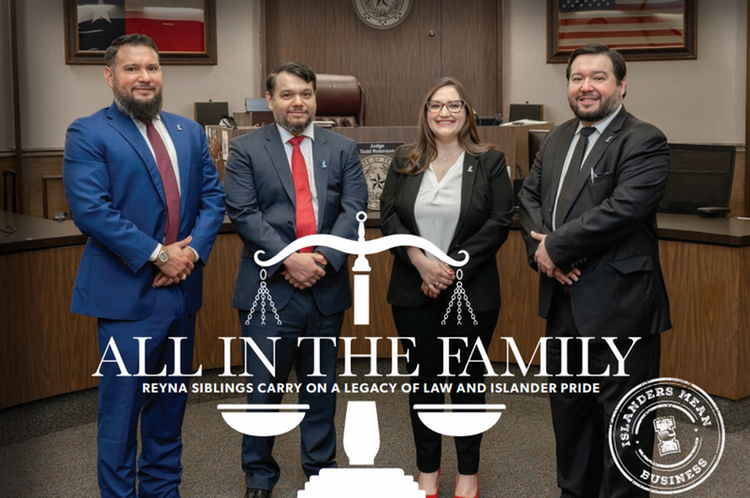NSF Supports Island University Researchers as they Team Up to Develop Cutting-Edge Fish Identification App
CORPUS CHRISTI, Texas – Starting this September, scientists from Texas A&M University-Corpus Christi, Michigan State University (MSU), and St. Anselm College, New Hampshire will harness the power of genomics and artificial intelligence to make waves in global, sustainable seafood harvests.
The researchers received a $749,255 grant from the National Science Foundation’s (NSF) newest and most unique structure, the Convergence Accelerator, to begin Phase 1 development of a user-friendly, fish species identification tool. In the right hands, the app will significantly reduce illegal, unregulated, and unreported fishing. Next year, the team will be up for an additional 2 years and $5 million in funding.
“Our project combines the CRISPR-Cas13a Specific High-sensitivity Enzymatic Reporter unLOCKing system, or SHERLOCK, and artificial intelligence capabilities to develop low-cost, rapid field-deployable species identification tools,” said Dr. Mariah Meek, Assistant Professor in the Department of Integrative Biology in the College of Natural Science at MSU and lead investigator on the grant. “During Phase 1 of this project, we will develop SHERLOCK assays paired with an artificial intelligence smartphone app for species identification between three pairs: Carolina vs Scalloped Hammerhead, Atlantic salmon vs the Pacific salmonids, and bigeye vs yellowfin tuna.”
In the last 30 years, sustainable harvest of global fish stocks has plummeted from 90% to 66%, according to the Food and Agricultural Organization of the United Nations. Regulation, monitoring and enforcement of sustainable harvest is difficult and hinges on the ability to correctly identify species that, on the surface, look extremely similar. Some species are almost impossible to distinguish based on their appearance, such as the two species of sharks, while at other times customs officials may only have a fin to go on.
That’s where Meek believes SHERLOCK—one that “Sherlock Holmes” creator Arthur Conan Doyle could never have imagined—will give fishers, fisheries managers, agency biologists, customs officials, and seafood vendors the power to become their own piscatorial gumshoes. By snapping a picture with their phone and wiping the fish in question with a swab, the tools will enable them to correctly identify which fish is which.
“This app will improve seafood traceability by enabling verification of species at each level of the supply chain, as well as improve monitoring of conservation status and enforcement of protective regulations,” said Meek. The app will be the latest genomics tool helping to improve humans’ ability to conserve biodiversity under development in the Meek Lab.
Drs. David Portnoy, Associate Professor of Life Sciences, and Chris Hollenbeck, Assistant Professor of Life Sciences, both from the Island University’s Marine Genomics Lab, as well as Dr. Shannon O’Leary, Assistant Professor of Biology from St. Anselm College, are Co-PIs on the project.
For years, the Marine Genomics Lab has been working with cryptic marine species – species that are hard to tell apart based on morphology alone – as well doing some forensic-type work. Most recently, the lab helped Texas officials sort out the species identity of some shark fins they confiscated, Portnoy said.
“The way we do this work is by characterizing parts of the genome that are diagnostic between or among – if there are more than two species – species,” Portnoy said. “We have had a number of grants recently that focused on Carolina and scalloped hammerheads and so we have background data necessary to design a SHERLOCK assay for this pair.”
Portnoy said the lab will contribute some data pertaining to tuna as well.
“Because some species are impossible to tell apart morphologically, we have had to design genetic assays that permit species identification. However, those assays had to be run in the lab,” Portnoy said. “SHERLOCK allows us to take molecular technology we have developed at TAMU-CC into the field and apply it in real time. The approach could really be a game changer for fisheries management and enforcement.”
Dr. Nihar Mahapatra, Associate Professor in MSU’s Department of Electrical and Computer Engineering in the College of Engineering, is Co-PI on the project and the lead for the computational and artificial intelligence aspects of the project. Mahapatra’s data-driven AI software will be paired with the smartphone app and SHERLOCK assays to enable cost-effective, high-throughput testing to identify large-scale patterns in fish species mislabeling.
“Our goal is that these tools will also help smaller, sustainable fisheries as it will provide a path for verifying the labeling and sustainability of their products and may allow them to sell their products at a higher price point and gain access to retailers with sustainability commitments,” said Meek.
The team is one of 28 Phase 1 teams selected for the NSF’s Convergence Accelerator’s 2021 Networked Blue Economy (Track E) 2021 cohort that aims to produce products, processes, and resources that will allow the United States to engage more sustainably with the ocean both environmentally and economically. Fueled by cutting-edge convergent research and human-centered project design, the Convergence Accelerator format seeks to collapse the time and distance between research, problem-solving and deliverables designed to benefit society on a massive scale, and fast.
As the number of people in the world who eat fish increases while sustainable harvesting decreases, the speed with which the team’s app goes live will be key to preventing the illegal
harvest of millions of fish and helping the seafood-eating public avoid purchasing unregulated and overfished species.
“The simplicity of the genomic test kits and smartphone app integration will make information on fisheries practices and seafood supply chains accessible to the general public, equipping consumers to make informed decisions about seafood consumption,” Meek said.






